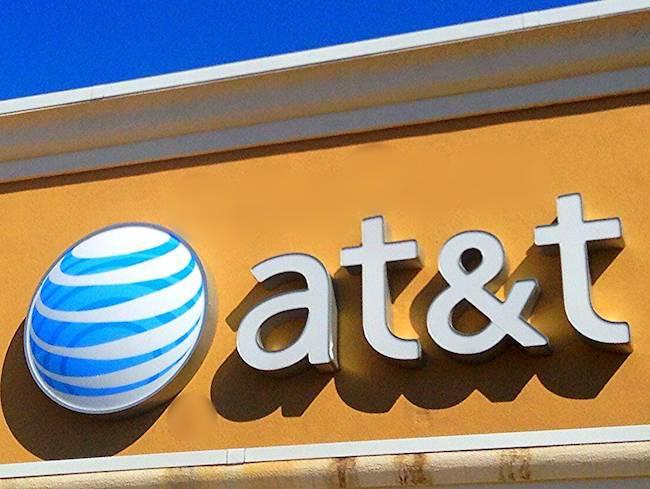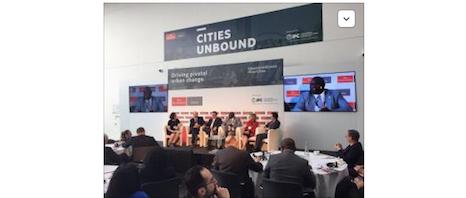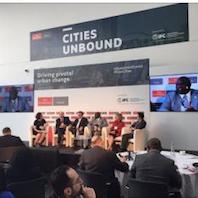What You Need to Know About the Hidden Health Cost of Fossil Fuel Subsidies


Fossil fuel companies receive billions of dollars in government subsidies each year. A major argument for ending those subsidies these days, is the effect that carbon-based pollution has on the atmosphere – what scientists now say causes climate change.
But new research suggests that there is another compelling reasons for halting reconsidering that funding that our tax payer dollars cover: our health.
According to a study by the European not-for-profit organization, Health and Environment Alliance (HEAL), fossil fuel subsidies from G20 countries amount to $444 billion per year. That amount, say researchers, is actually small compared to the health costs that are incurred as a result of fossil fuel industries. Researchers found that the use of fossil fuels resulted in health-related costs of more $2.76 trillion across the globe, or six times the total cost of those government subsidies.
Premature death related to air pollution, cardiovascular and pulmonary diseases and the adverse and catastrophic effects of climate change were some of the impacts that researchers tied to fossil fuel use.
Data from the International Monetary Fund and the Overseas Development Institute were compared with figures supplied by Oil Change International, allowing researchers to extrapolate the impact of fossil fuel industry on health.
By juxtaposing the two data sets, HEAL has illustrated for the first time the extent of health costs caused by fossil fuel combustion, and the subsidies that drive it,” said HEAL.
ODI and OCI figures (2013-2014) allowed researchers to look at the international sources for direct spending, tax deductions, public funding from state-owned enterprises and financial institutions that were majority government-owned.
An IMF publication entitled, “Getting energy prices right” provided data on health impacts of air pollution. The publication by Parry et al (2014) looked at the amount of air pollution that was inhaled by residents living near industrial sites. “This pollution intake is then evaluated on the basis of latest evidence on the relationship between air pollution exposure and mortality rates for pollution-related diseases,” said HEAL.
The researchers then “monetized” those health impacts by looking at the trade-offs that residents make between health and financial considerations.
The writers also pointed out that not all fossil fuels are equal. Liquified Petroleum Gas (LPG), for example outweighed the use of coal as a cooking fuel and that replacement has actually led to better health and quality of life for many populations in India.
The report identified five key reasons to eliminate fossil fuel subsidies, those monies that allow fossil fuel industries to remain in place as usage of carbon-based fuels decrease.
- One in 8 deaths across the globe are attributed to air pollution
- Disproportionate public funding perpetuates “energy poverty,” migration and food insecurity
- Subsidies discourage investment and development in green energy
- Subsidies rob funds from potential government investment in better health resources
- Subsidies undermine the agreements made at the Paris Accord to limit global warming to 1.5 degrees C.
The report also points out that while there is no binding definition of fossil fuel subsidies, the World Trade Organization defines a subsidy as “any financial contribution by a government, or agent of a government, that confers a benefit on its recipients.” Companies and governments often assign their own interpretation of subsidies, making it harder to gauge the real dollar-cost of such funding. Instead, says HEAL, subsidies are any contribution, public or consumer based that aid or incentivize the industry’s continuation.
The report also looked at which the five greatest offenders when it came to fossil fuel-related health impacts. China came in first at $1785.4 billion, followed by the European Union at $229.5B. The US was third, with fossil-fuel-related health costs estimated at $219.2B. Russia and India followed at $196.4B and $140.7B, respectively.
The report reflects the latest effort to encourage governments to look at the comprehensive cost of supporting carbon-based energy with externalities factored into their cost (e.g., those health costs that often aren't regarded when considering a company's significance). HEAL, which is made up of some 75 public health organizations and professionals has been pushing the EU and other nations to reconsider subsidies for certain industries that have been found to adversely affect public health. It’s also called for a mechanism by which industries, like coal, can be assessed based on its impact on global health issues, including climate change risks.
Readers can find the report, Hidden Price Tags: How Ending Fossil Fuel Subsidies Would Benefit Our Health and other publications on HEAL's website.
Flickr image: lady lbrty
The Question Miami Home Buyers Hate to Ask: How's Climate Change Doing?


Just how do you shop for real estate in Miami? The world's ninth most vulnerable city when it comes to sea level rise has been magnetizing real estate developers and and starry-eyed homeowners for decades. But these days most of us would be just a bit wary of snatching up one of those multi-million-dollar deals without asking a key question: "How's the tides around here these days?"
But that's exactly what potential homeowners seem a little reluctant to ask when faced with a potential buy. Maybe it's the prospect of bad news, knowing that Miami is sinking. Why ask about something that seems far off?
And that may be why, according to a Miami Herald survey, 64 percent of realtors in the Miami area say their clients don't ask whether climate change or sea level rise will affect the house they are looking to buy.
The research, which was conducted by Bendixen & Amandi International, surveyed the opinions of 100 realtors from the Miami-Dade area who had direct experience in South Florida areas like the upper-end at risk neighborhoods of Miami Beach and Brickell.
Surprisingly, it was those areas that sat closest to eventual flooding that clients were clamoring to snatch up.
And it wasn't because the real estate agents who were leading the search were unfamiliar with climate change risks in the area, either. When asked whether they were concerned about the potential impact of climate change and sea level rise on the local market, 59 percent of realtors said they were very concerned.
More than a quarter of the agents said more educational content about buying and selling in the local market was needed. The majority of the respondents also said buyers weren't doing enough due-diligence when it came to assessing the property before they bought.
Sellers also had unrealistic expectations. A full 50 percent said sellers were overpricing their real estate and having unrealistic expectations.
Those statistics, combined with the criticism that fellow realtors were being "unprofessional" or offering bad advice/judgment (aggregate score: 56 percent) underscored the fact that buyers might not be getting enough information about the risks of buying Miami coastal property.
Yet agents resoundingly said that if they were in the market to buy, Brickell and Miami Beach would be the last places they would go property-hunting.
Miami's eternal optimism
The survey didn't explain why buyers weren't considering climate change as a risk factor, but an article by a Miami local Mario Ariza may shed a bit of light on the thinking behind the real estate craze.
Ariza admits that even he wants to stay in "Magic City." He's well aware that Miami is in for challenging times in the next few decades and that "climate change has me thinking twice about purchasing property."
"I've made up my mind to settle down here," Ariza said as he segued into "How to buy a home in Miami, the sinking city," drawing attention to the fact that by 2030, Miami is supposed to see 380 high-tide events a year. "Which is just around the time I'll probably finish paying the mortgage," he jokes.
It's that kind of cocky, optimistic (and many would say short-sighted) view that prevails on Florida's most endangered coastline and as he points out, it rises all the way to city hall. As Jane Gilbert, Miami's resiliency manager points out, owning a home in an area ripe for a 100-year flood that's already listed on the Federal Emergency Management Agency (FEMA) map isn't necessarily a deterrent toward buying, it's good information to have while you are checking out its elevation certificate. That certificate is important, as it tells the buyer that the property is for now, above sea level.
And it is contractors who still see profit to be gained in promoting a front-row property that is expected to disappear who contribute to the optimism, too. They see Miami's future in relation to real estate cycles, not sea level inches and future property values.
It's a short-range point of view that Miami Herald's survey also underscores. Areas like Miami Beach and Brickell have been gaining, not decreasing in value and density in recent years. People want a piece of that soon-to-be-gone living experience.
Local leadership
The survey highlighted one other interesting tidbit of information about the city's buying craze: Realtors' jaundiced views about local governance.
Forty-three percent of respondents said "no" when asked if they felt Miami-Dade County government was taking a leadership role, opposed to 42 percent that said yes and 13 percent that didn't know or didn't answer.
The division was even starker when it came to determining whether the local government was an obstacle or a facilitator to doing business in the real estate market. Forty-six percent said it was an obstacle, 34 percent said facilitator, 10 percent said both, and 8 percent said neither. Yet 80 percent said that the local government played an essential role in ensuring a vibrant market that enhanced property values.
And, as Ariza points out, Miami's real estate market it isn't just dependent upon whether the city and county resiliency managers do their jobs, but whether that optimism matches up with the more pragmatic views of insurance companies. It's the reinsurance companies, Ariza astutely points out, that have the power to pull the plug on mortgage funding when they think their own investments are in danger.
Still, to the condo shopper looking for that once-in-a-lifetime home, now doesn't seem to be the time for asking deep questions about the future of a sinking coastline.
They know full well there may never be a view like that again, and the cost of inflated real estate is worth being able to say they owned a tiny part of it -- even if they may not be able to recoup their investment.
Flickr image: Ines Hegedus-Garcia
How Solar Companies Give Back


By Jonathan Deesing
Although the solar energy industry is still relatively young, many solar firms are already pursuing efforts to give back both at home and abroad. Indeed, philanthropy dovetails perfectly with solar power, which provides environmental benefits and opportunities for energy independence for disadvantaged communities.
Here are just a few ways solar companies are turning profits into good and making the world a better place.
Supporting Charitable Efforts at Home Many solar companies choose to give back through traditional means by donating to charities. California-based Green NRG, for example, donates to a local non-profit with every solar unit sold. Clean Solar, located in the Bay Area, has a similar program in which the company donates $150 to charity for every installation – to date Clean Solar has donated over $250,000.
Founded in 2013 as the philanthropy arm of Elon Musk’s firm SolarCity, GivePower is perhaps the most notable solar charity out there. For every megawatt installed by SolarCity, GivePower installs solar arrays on a school in the developing world. To date, GivePower has provided 200,000 people with power in 1,500 schools and 13 countries like Nicaragua and Haiti. The charity’s goals are myriad—touching on everything from economic development to cleaner water—and they believe all of these problems can be addressed with solar power.
Helping Around the Globe GivePower is not wholly unique, however, as many solar companies see solar as an ideal solution for helping to build infrastructure in the developing world. Solar provides sustainable energy for rural communities without pollution or other harmful byproducts.
Sunbridge Solar, a firm based in the Pacific Northwest, makes an effort to give back locally, but the company has also spearheaded humanitarian solar projects everywhere from Nepal to Columbia. Through these efforts, Sunbridge has installed solar arrays on orphanages, schools, and medical clinics, bringing reliable electricity to rural communities.
Similarly, Utah’s Go Solar uses the sale of each solar array to fund loans for solar products in Uganda. Many communities in rural Uganda use kerosene lamps as their primary source of light – these lamps emit harmful gasses that are especially toxic for schoolchildren, who do most of their studying at night. Go Solar provides solar lamps for schoolchildren and other solar products for female entrepreneurs, orphanages, and schools. All told, Go Solar’s Give Solar initiative has touched more than 5,000 households in off-grid communities across Africa.
Yet another successful model, solar lamp company Little Sun is able to sell its lamps in Ethiopia at a steep discount because it sells them at a premium in more affluent areas of the world.
Bolstering Nonprofits Another great way solar companies are giving back is through initiatives that support nonprofits. Solar power can be hugely beneficial in reducing energy costs faced by nonprofits, but unfortunately, it is often outside their price range.
Revision Energy’s solution is to provide power purchase agreements (PPA) that are designed specifically for nonprofits. The concept behind the program is to install solar systems at no upfront cost to nonprofits, simply charging them a fair market rate for their energy until they can eventually buy the system at a discounted price. These PPAs have been used to install solar for municipal buildings, schools, and Habitat for Humanity facilities.
Powering It Forward Solar is the perfect solution for getting power to disadvantaged and off-grid communities. Unlike fossil fuels, solar power doesn’t require an imported fuel source, and it emits no pollution. As solar panels become increasingly efficient, more communities will look to solar to not only provide clean energy, but to also save money. And solar companies will be right there to help.
Jonathan Deesing is a Solar Power Specialist with SolarPowerAuthority.com. When he's not studying up on new solar tech, you can find him in the backcountry putting it to the test.
Image credit: Ken Bosma
Tesla Model 3 Boasts 310-Mile Range Option


On Friday night, the first 30 owners of Tesla’s new Model 3 were handed the keys to their new cars. Also that evening, Tesla announced a pricier version of the mass-market Model 3, which boasts a range of 310 miles - besting both the much-anticipated standard model as well as the Chevy Bolt.
And as Bloomberg pointed out, even at $44,000, a $9,000 premium over the standard Model 3, this souped-up version of the Model 3 has the cheapest price-per-mile vehicle range. At $141.94, the “Range+” bests the 238-mile range Bolt on that ratio by almost $16.00. The company expects this high-performance option to debut next year as it prefers to ensure the conventional Model 3 can reach mass production rates with a minimal number of hiccups.
In addition, the extended-range Model 3 can accelerate from zero to 60 miles per hour in 5.1 seconds, and claims a supercharging rate of 170 miles in 30 minutes- similar to the company’s more expensive Model S sedan.
The overwhelmingly favorable reviews will impose even more pressure on Tesla, as the company claims that it has accepted over 500,000 deposits of $1,000 each by drivers who covet the vehicle - which many analysts say could transform the automobile industry. More automakers are responding in kind; Volvo, for example, announced earlier this month that it will launch five new all-electric models in 2019 while phasing out the internal combustible engine. Meanwhile, the United Kingdom has followed the lead of France and said it will ban all gasoline- and diesel-fueled automobiles by 2040 - and that target date, to some critics, ignores the odds suggesting all-electric cars will become the standard mode of personal transport well before then.
Tesla CEO Elon Musk was widely reported to tell the company’s employees that the next six months will be “production hell.” As the company streamlines its manufacturing process, production of the Model 3 is expected to be slow at first - but by the end of the year ramp up to 5,000 cars a week. The company says a reservation made now could result in a delivery during mid-2018. But a more realistic view of Tesla’s shift from a luxury automaker to a mass-production outfit means that the company would catch up with its waiting list in late autumn of 2019.
But no matter how much pressure Musk, Tesla’s fans and detractors may heap on this Silicon Valley upstart, watch for other global automakers to feel even more heat. Other electric car options do not even come close to the Model 3’s performance and value. Ford, for example, touts the 2017 Ford Focus Electric as a gas station-avoiding value at just under $30,000. But the Detroit automaker does not even mention its range on its web site (Bloomberg says it can run 115 miles on a single charge). Hyundai’s Ioniq Electric, priced about the same as the Focus Electric, eeks out only a little farther per charge, at 124 miles.
If reviews of the Model 3 continue to be stellar while Tesla meets its production goals, other automakers will be left in the cold as they find themselves in the race to be #2 - as in playing catch-up with the Bolt.
Image credit: Tesla
Climate Change, Human Migration, and the Delusion of Isolation


The Arithmetic of Compassion
One death is a tragedy; a million deaths is a statistic
Be it from social unrest, economic upheaval, or environmental collapse, forced human migration is at unprecedented levels. According to the UNHCR, there are more than 65 million displaced people in the world today. Of those, more than 22 million are forced refugees. Over half are under 18 years old. Nearly 20 people are displaced from their homes every minute.
Sixty-five million people forced to flee their homes?
However disquieting, it almost doesn't matter. As awful as that sounds, our emotional and mental resources aren’t naturally up to the task of finding empathy for so many. What researchers call “compassion fade” creates "psychic numbing.” Our minds are desensitized by numbers like these. It is, as research psychologist Paul Slovic calls it, the “arithmetic of compassion.”
It’s hard for us to wrap our heads around such numbers. We are much more likely to respond to the image of one single child - bruised, dazed, and recently orphaned sitting alone in an ambulance - than to the collective human tragedy swirling around one unfortunate little boy.
Overcoming this cognitive dissonance between caring and callousness is no easy task, but necessary. We risk allowing the numbers of displaced people to expand by orders of magnitude, overwhelming not only the material resources but also the compassion to care.
Ostensibly due to civil wars, religious extremism, and political unrest, there is one underlying progenitor to forced human migration. Until we address it, no humanitarian aid, no travel ban, no walled-off border will slow the tragedy of human displacement.
It is the one common denominator that we all share: the planet; living on it.
Confluence
Violence and unrest spread across the Middle East into Europe and further. In its wake, a growing "tide" of human migration. For some, it is a crisis of conscience, for others, a threat to their perceived well-being and cultural identity. For most of us, it's numbing. For all, figuring a solution to the refugee crisis remains elusive.
The problem seems intractable, but we look for easy answers. People continue to suffer, lives are uprooted, children orphaned, but we propose policies that do little to address the root causes. Vigilance turns to aggression; caution to isolation.
For executive director Joe Speicher, and his colleagues at the Autodesk Foundation, human migration is ground zero for impact. Speicher works on-the-ground in some of the world's most vulnerable areas where human migration and climate change converge to help bring relief from immediate threat and solutions to long term risks.
With their partners from around the globe (including the UNHCR), Speicher and his colleagues see first-hand the tragedy, heartbreak, and inhumanity of the refugee crisis. In the context of ongoing human suffering, it may seem counter-intuitive, but the refugee crisis will never be solved until and unless we deal with climate change. In fact, it will only get worse.
"We think 65 million refugees currently around the world - that we know of - is a lot," he says.
"If we don't deal with the impacts of climate change, the number of refugees increases by orders of magnitude."
We spoke Speicher on World Refugee Day. He doesn't typically "assign much value" to "World (pick your issue) Day" observances “ He makes an exception for World Refugee Day."This is the perfect issue conflating social impacts and environmental impacts,” Speicher says.
“These are emergent problems with multivariate inputs that lead to something like the Syrian crisis. Climate change is one of the underlying causes.”
Research suggests climate change could force between 200 and 500 million coastal residents from their homes in the next 30 to 80 years. Imagine the social tension with a half-billion people in migration.
“We don’t connect those dots enough because it’s complicated," Speicher says.
"It’s much easier in the reductionist political discourse to point to one thing”
Of those that have connected the dots, however, few are more formidable than the U.S. armed forces.
Red team, blue team; no time, no reason
For years, military leaders have warned of the cascading regional climate impacts that jeopardize global security and disrupt the geopolitical map. Climate change is on the military's "radar" as a threat multiplier. The generals and admirals understand global warming much better than their current civilian leaders.
But in Washington, the Trump administration's EPA chief Scott Pruitt invites yet more "discussion" about the veracity of climate science, instead of the real issue of what to do about it. The well-worn playbook of false equivalency and obfuscation continue with renewed vigor from the new U.S. administration.
"The Department of Defense mitigates against the risks climate change," says Speicher,"Yet, we continue to debate (climate change) at the 30,000-foot view in Washington, D.C."
Perhaps even worse than the ceaseless effort to dilute the issue is President Trump's attempt to isolate the United States from the rest of the world on every important issue of national and global stability. As Speicher says, the refugee crisis is a confluence of the pressing social and environmental impacts caused, in part at least, by climate change.
Global warming cedes authority to no border. Despite the president’s desire to wall off the country from all travails of the outside world, it is a futile ambition. Isolation cannot be achieved and it is not leadership in a complex world.The human story of climate displacement is already begun. And not only in some far-flung corner of the world, but right here in Donald Trump's America.
"We are already resettling climate refugees in the U.S.," says Speicher.
From the Bayous of Louisiana to the barrier islands off the Atlantic coast and native villages of Alaska, climate change has arrived and it is taking names.
Laughing at us
The president represents all Americans everywhere. Including Pittsburgh. While a nominally clever soundbite, the implication inherent in “Pittsburgh, not Paris doesn’t add up.
Today, there are more than 90 coastal communities in the United States struggling with chronic flooding. The kind of flooding, writes Laura Parker in National Geographic, that is “so unmanageable it prompts people to move away.”
According to a study published in the journal Elementa, more than 170 U.S. communities face flooding and inundation within less than 20 years. The very people he says will “no longer be forgotten” are first in line to feel the impact of global warming.
President Trump claims that U.S. participation threatens coal jobs, sacrifices our economic advantage, and, worse yet, is little more than a global inside joke. People are “laughing at us.”
Nobody likes getting laughed at.
Behind the vague, isolationist, and misinformed reasoning for withdrawing from the Paris Agreement, the President reveals his essential “us vs. them” mentality; admittedly never far from the surface in any case. Yielding to the self-interest his EPA administrator and chief strategist, President Trump is unable to grasp the significance of the Paris Agreement, let alone its specific details, let alone the gravity of the situation. With a unique twist of neurosis thrown in for good measure:
“We don’t want other leaders and other countries laughing at us anymore,” he says to the world. “And they won’t be. They won’t be.”
In President Trump's mind, there are no win-win scenarios. It is always a simple zero-sum game. The Paris Agreement is, by design, a means of gaining “advantage” over the U.S.
“The rest of the world applauded when we signed the Paris agreement – they went wild, they were so happy – for the simple reason that it put our country, the United States of America, which we all love, at a very, very big economic disadvantage.”
Despite President Trump's logic, the economic disadvantage of climate change is not from action or participation in the hard-won Paris Agreement, but from inaction and isolation.
“This is not an issue that, as we do all too often, allows us to avoid the prevention upfront and seek treatment after the fact," says Speicher.
Doing the math, no place to hide
In his interview with David Muir last January, President Trump makes a valid point when he tells Muir that the “world is a mess.”
Indeed, it is true. Many unprecedented challenges define our new century. There is no assurance we are heading in a direction from which we will emerge into the next century “happily ever after.”
So, yes, on the face of it, President Trump’s perspective is credible. Such a worldview is arguably even more troubling than the “mess” we are in.
We look to our leaders to shape the narrative around which we define the dangers and possibilities of our times.
Whatever the politics, we remember best those who inspire within us a vision of how the world should be, could be. By tapping into the emotional psyche of society, people are motivated to action by a common narrative, driven either by fear and distrust or hope and unity.
I suggest that President Trump’s rhetorical style is less than inspirational. His reasoning for withdrawing from the Paris Agreement does not reflect our better nature. It belies the arithmetic of compassion. The failure of his vision acquiesces to his emotional limitations; forsaking the long, hard road of global cooperation in service of our common challenges. The United States is no longer reliable as a global leader.
And so, we look elsewhere for leadership. Business leaders, mayors, governors, citizens.
“If we want to keep those numbers manageable," Speicher says, "we've got to start dealing with the impacts of climate change."
Some may argue the number of refugees in the world is already at unmanageable levels. Some seek to wall off their surroundings from the tumult of human misery. That works, perhaps, for some; for a little while. It is no solution.
Isolation is a delusion motivated by fear. Climate change, and the human unrest it engenders, finds us all.
Images courtesy of United Nations, White House
$85 Billion Takeover Crimps AT&T Response to Trump's Toxic Boy Scout Speech


Last week U.S. President Donald J. Trump upended decades of nonpartisan tradition by turning a Boy Scout jamboree into a campaign rally. The incident may have also violated rules that prohibit the organization from engaging in politics. A firestorm of protest erupted after the incident, but the national Boy Scouts of America organization has so far refrained from criticizing Trump's behavior directly. In addition, there has been no word from AT&T, whose CEO Randall Stephenson also happens to be president of the Boy Scouts of America.
The silence from AT&T is reasonable from a bottom line perspective, so now the question is whether or not Stephenson's business concerns have trickled over to influence the Boys Scouts response.
AT&T and the bottom line
AT&T has been building a CSR profile, and it has been paying attention to energy and water resource issues as well as social issues, so it does have a platform upon which to criticize the President. However, the company is in a delicate position with respect to the President's policies.
Back in April, Fortune magazine described how AT&T stands to benefit from Trump's proposals:
The Trump administration proposed plans giving two big wins to the nation's largest communications companies on Wednesday.
Early in the day, the President proposed tax cuts that would make AT&T, Verizon and Comcast among the biggest winners of his plan. Later, his appointed head of the Federal Communications Commission proposed lifting so-called net neutrality rules that put limits on Internet service providers.
These two issues alone will have a consequential impact on the future of AT&T.
Now add the company's proposed $85 million takeover of Time Warner, and it becomes clear that AT&T has nothing to gain and everything to lose by antagonizing the Trump administration, or Trump personally.
Washington Post reporter Jena McGregor provides some insight (do read the full article for many more details):
AT&T is awaiting word on its proposed $85 billion takeover of Time Warner — putting Stephenson in a potentially difficult scenario as many parents and former Boy Scouts have called for an apology about Trump's speech.
[snip]
The uproar is a particularly volatile example of a fundamentally new era, one in which polarization and social media help ensnare CEOs in political flash points, often prompting boycotts from customers. Leading the Boy Scouts, in different times, would hardly seem to have been a risk.
Trump criticized the proposed Time Warner takeover during his campaign last year but AT&T worked hard to get on his good side.
Stephenson praised Trump lavishly after Election Day last year, and the company was a big donor to the Trump presidential inauguration fund.
The effort seems to have paid off, and just last month Trump had kind words for Stephenson.
So, where are the Boy Scouts?
That explains the radio silence from AT&T. According to McGregor, AT&T is referring requests for comment to the Boy Scouts.
The comments are certainly not lacking from local Scout groups, Eagle Scouts, parents and other individuals involved in Scouting, who have reacted vigorously to Trump's speech at the jamboree.
The Boy Scouts national organization also issued a statement, but the organization did not criticize the President by name, and so far Stephenson himself has not commented.
The task of responding on behalf of the national Boy Scouts organization was left to Chief Scout Executive Michael Surbaugh, who posted an open letter on the Boy Scouts website.
The letter deflects criticism away from the President by focusing attention on those who found the remarks offensive:
I want to extend my sincere apologies to those in our Scouting family who were offended by the political rhetoric that was inserted into the jamboree...
In other words, the rhetoric was not offensive by any objective measure, but only insofar as some people were offended.
Rather than placing the responsibility for the political nature of the speech on Trump, the Boy Scouts also blame themselves for enabling their event to become politicized:
...We sincerely regret that politics were inserted into the Scouting program.
And, the letter makes it clear that the Boy Scouts were simply following tradition:
The invitation for the sitting U.S. President to visit the National Jamboree is a long-standing tradition and is in no way an endorsement of any political party of specific politics.”
The sitting U.S. President serves as the BSA’s honorary president. It is our long-standing custom to invite the U.S. President to the National Jamboree.
To be clear, even if the Boy Scouts did not share leadership personnel with AT&T, the President's behavior put it in a difficult position. The organization has evolved in recent years but its conservative image persists.
Criticizing a sitting president, no matter how unpopular, would be unprecedented for the Boy Scouts organization.
That puts the ball back in AT&T's court. All things being equal, it would not be unusual for the company to take a stand. Many other leading executives have argued forcefully against Trump and his administration over immigration, health insurance, climate change and public parks among other issues.
Nevertheless, Stephenson and AT&T have ample reason to hope that the controversy goes away all by itself.
Photo (cropped): Mike Mozart via flickr.com, creative commons license.
Mining for Fertilizer: How Mosaic Manages Environmental Impacts


To gain practical skills for sustainability management, join us at the COMMIT! Forum in DC October 11-12 2017
There are over seven billion people in the world and every one of them needs to eat to live. Feeding a growing world population means that crop yields have to be improved. Fertilizers are important to improve crop yields in order to feed a growing global population.
As the world population grows, the demand for food will continue to grow while the amount of cultivated land will not significantly increase, making methods to improve crop production important. American farmers are the most productive in the world, according to the U.S. Geological Survey (USGS). The U.S. is a big producer of fertilizers for both domestic use and to be exported. The USGS maintains that applying mineral fertilizers in “increased quantities...is one of the easiest and quickest ways to improve soil fertility.”
“Every plant requires three nutrients to grow and thrive—nitrogen, potassium and phosphorus,” explains Benjamin Pratt, Vice President of Corporate Public Affairs at the Mosaic Company, who spoke to TriplePundit.
Some fertilizers are phosphorus based. Phosphorus is a mineral, mined mainly as phosphate rock, and phosphorus is used primarily to grow crops. It is a necessary element for both plant and animal nutrition. The U.S. is the third-largest producer of phosphate, and the third-biggest phosphorus fertilizer user in the world. Minnesota-based Mosaic is the largest phosphate producer in the world. The company mines phosphate rock from almost 200,000 acres of land it owns in Central Florida. Its products are processed into crop nutrients and shipped around the world.
Phosphate rock is typically found 15 to 50 feet below the ground in a mixture of phosphate pebbles, sand and clay called phosphate matrix. Pratt explained that there are several different ways to mine phosphate rock. Mosaic mostly uses “very large machines called draglines to remove the layer of earth above the phosphate seam and then to remove a matrix of phosphate rock, sand and clay, which first goes to a pit to be separated,” he said. The phosphate rock is sent through pipelines to a processing facility which turns it into phosphate fertilizer.
How Mosaic manages the environmental impacts of phosphorus mining
Although phosphorus-based fertilizers are needed to feed a growing world population, there are environmental impacts associated with mining phosphorus. The mining of the needed nutrient “requires the use of land, water and energy to create products that are essential to agricultural productivity,” Pratt said. But Mosaic aims to minimize its environmental impact “by recycling process water, developing energy through co-generation of electricity, minimizing waste and reclaiming every acre of mined land,” he added.
Fertilizers are needed to grow crops, but excess fertilizer can run off and enter natural waterways. When phosphates are present in excess in waterways problems can result such as algal blooms and even contamination of drinking water. Mosaic partners with organizations to reduce fertilizer runoff. The company is a supporter and promoter of a program called the 4R Nutrient Stewardship Program framework which helps farmers achieve cropping system goals. What the program does is synthesize best management practices for fertilizer into a framework which include optimizing yields, while maximizing profit and sustainability. The 4Rs of the framework consist of the right nutrient source, at the right rate, at the time time and in the right place.
Mosaic also supports The Nature Conservancy’s piloting of a nutrient application standard that encourages service providers, agricultural retailers and other certified professionals in three states (Indiana, Ohio and Michigan) where surrounding waters drain into the Western Lake Erie Basin to adopt the 4Rs best practices. Lake Erie is a drinking water source for millions of people and over half of all the fist in the Great Lakes live in its waters. The Western Lake Erie basin also happens to be one of the most productive areas to grow food in the U.S.
The company acknowledges that mining and processing phosphate is energy and water intensive. “We work carefully to maximize efficiencies and minimize our use of energy and natural resources, and have made significant progress in reducing Mosaic’s environmental footprint,” the company proclaims on its website. The approach to water management is one they refer to as “every drop counts” and the goal is to recycle or reuse water whenever possible. Mosaic has decreased its groundwater use in Central Florida by more than 50 percent over the last 20 years, and recycles or reuses about 90 percent of the water at its Florida phosphate facilities.
The company has a goal to reduce its total energy use by 10 percent per ton of finished ton by 2020. Co-generation is one way that Mosaic can reduce its energy use. Cogeneration starts in its manufacturing operations, where sulfuric acid is used to separate phosphorus from raw material inputs. It is a process that creates a big amount of waste heat. That waste heat is recovered and converted to steam which is sent to turbine generators and converted to electricity to power its manufacturing facilities and mines.
What about mined lands? Mosaic works to return the land to a productive use. It is required to do so by Florida law. The process of land reclamation starts before phosphate mining starts. In four different Florida counties, it has partnered with local and state governments to create local and state parks where people can enjoy recreational activities such as fishing and camping. In 2015, the company planted over 1.2 million trees on reclaimed land.
Mosaic proves that a phosphorus mining company can work to minimize environmental impacts and be the largest phosphate producer on the planet.
Image credit: fdecomite, Flickr
The Biggest Myth of Sustainable Investing


By Janet Brown
Many people like the idea of sustainable or impact investing, but they have a common misconception that performance can suffer. This notion has been repeatedly debunked.
A 2015 review of over 2,000 academic studies since the 1970s found that the majority of studies show positive findings between environmental, social and governance (ESG) factors and corporate financial performance.
In 2012 RBC Asset Management2 reviewed four bodies of research on sustainable investing and concluded that socially responsible investing has not resulted in lower investment returns.
You don’t have to rely on surveys and studies, however. You can also look at real world results by comparing the performance of a sustainable stock index, like the MSCI KLD 400 Social index, which measures the performance of stocks with high environmental, social and governance ratings, and a conventional stock index like the S&P 500.
Since 1990, when the KLD started, it has performed slightly better than the S&P 500, as shown in the below graph.
Sustainable investing has evolved. Have you kept up?
Given all these studies and the actual track record of sustainable investing indexes like the KLD, why do people continue to believe that sustainable investing can hurt their returns?
One reason is that investors don’t realize how much sustainable investing has changed. They still think that sustainable investing either divests from certain industries, which could limit their opportunity to make money, or it only invests in clean energy, which could add volatility. But sustainable investing is no longer limited to divestment or clean energy.
Today, sustainable strategies are more comprehensive and inclusive. They don’t just exclude companies, they also seek to include companies that have good ESG characteristics. Rather than divesting from companies that don’t make the cut on an ESG level, some asset managers will invest in these companies with the goal of improving them. These managers use their power as shareholders to engage with a company’s management team in an attempt to help the company become a better corporate citizen and a better long-term investment. This approach has had a number of successes.
Sustainability is now mainstream. Some of the largest and most successful companies are working to address the world’s environmental, social and governance (ESG) challenges. This year, 82% of the companies in the S&P 500 will publish sustainability reports compared to just 20% in 2011. That’s a huge improvement in just six years.
Mutual fund managers that don’t market themselves as sustainable or socially responsible funds are also now integrating ESG criteria into their stock selection.
An increasing number of investors are recognizing the benefits of sustainable investing, and these days investors have many new investment choices that are designed to help them try to build wealth and a better world.
Janet Brown is the President and CEO of FundX Investment Group. She manages fund portfolios for high-net worth clients and foundations. She also manages a sustainable mutual fund. Janet is a board member of several non-profits and foundations and a longtime advocate for sustainable, responsible impact investing (SRI).
Al Gore at Ashden Awards: 'Must, can, will we change?'


London conference discusses urban sustainability

